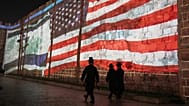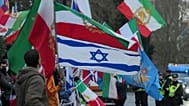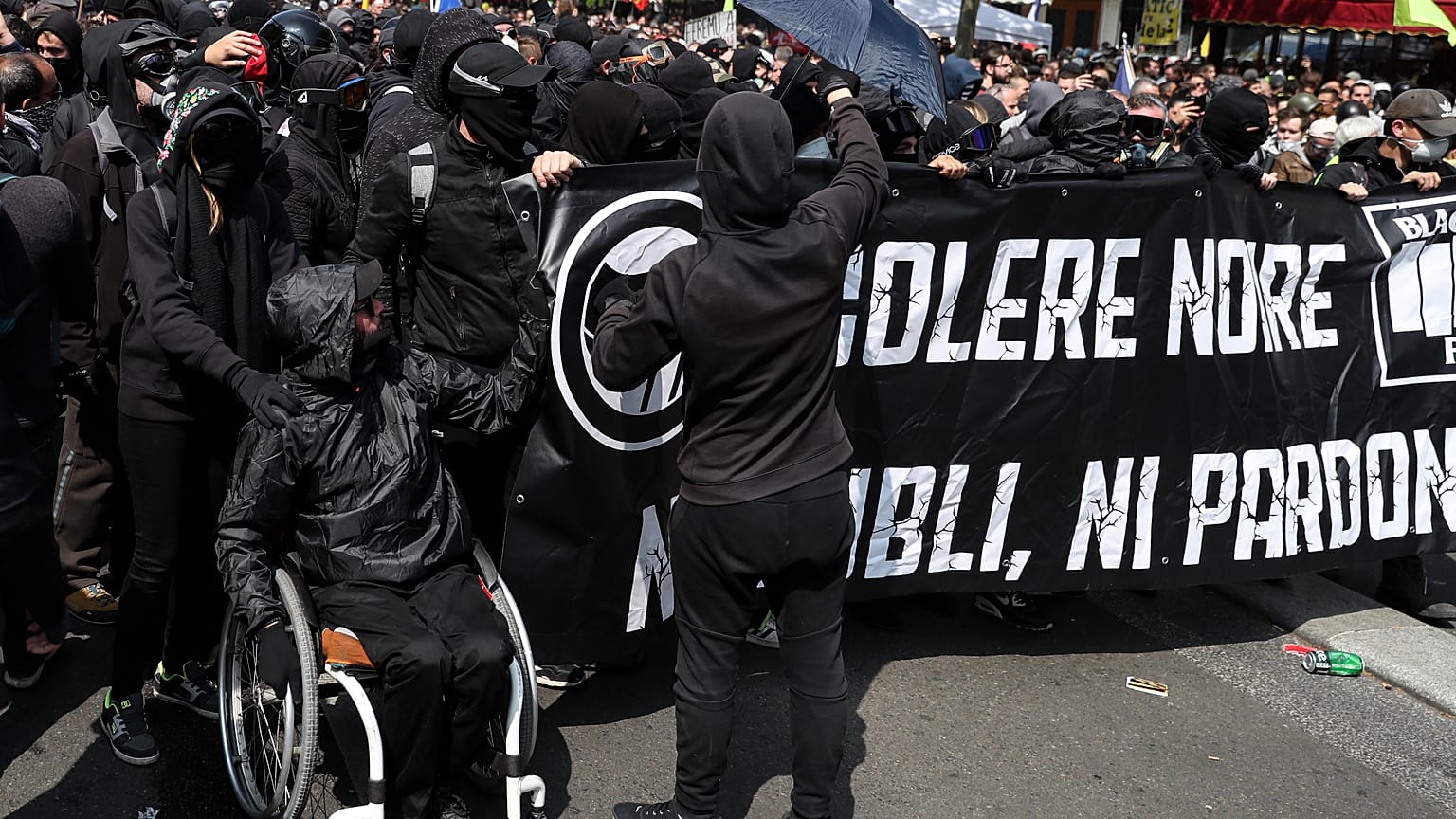Who are the Black Blocs and what are their ties -- if any -- with the yellow vests movement? Euronews explains.
Dozens of masked and hooded anarchists hijacked Paris' May Day rally on Wednesday, burning bins, smashing property and hurling bottles and rocks.
The so-called 'Black Blocs' immersed themselves in a crowd of labour unions and yellow vest demonstrators that was focused on protesting President Emmanuel Macron's policies.
Who are the Black Blocs and what are their ties — if any — with the yellow vests movement? Euronews explains.
Definition and origins of the Black Blocs
"A Black Bloc can be defined as a form of collective action (...) of revolutionary militants dressed in black as part of a street protest," according to historians Bryan Muller and Hugo Melchior.
The protest tactic first appeared in Western Germany in the 1980s, prior to the fall of the Berlin Wall, when squatter communities with anticapitalist views clashed with police, the researchers said.
It gained international prominence in 1999 in Seattle, when hundreds protested against World Trade Organisation talks.
The Black Blocs are usually close to anarchist movements and consider violence as a legitimate means of political action.
"Violence makes it possible to be heard," said Julien, a young French Black Bloc interviewed by LCI television under conditions of anonymity.
"If 10,000 people peacefully demonstrate the media will merely publish a short column," the young militant said.
"We talk about the yellow vests everywhere in the world because there has been violence," he added.
'No convergence' between Black Blocs and yellow vests
While Black Blocs have existed for decades, the yellow vests are a new social movement that appeared in November 2018.
The protests — named after the fluorescent jackets French motorists are required to carry in their cars — started over plans to raise fuel taxes before developing into a broader revolt against the government that mobilised thousands of demonstrators nationwide each weekend.
"There is no convergence between the yellow vests and the Black Blocs," said Guillaume Farde, a security specialist and lecturer in Sciences Po.
Farde told Euronews that the yellow vests were a social movement, whereas the Black Blocs were a protest tactics, "an operating mode intended for street appropriation through ultra-violence."
The academic also emphasised that the initial demands of the yellow vests -- namely scraping fuel taxes — were very far away from the Black Blocs' anti-capitalist battles.
Yellow vests' shifting mottos
Yet, Farde noted, at the beginning of 2019, the demonstrators' mottos shifted away from tax policy to focus on social inequalities and the condemnation of police violence — two issues which are central to the black blocs' ideology.
From that point, the research said, Black Blocs became more visible in the yellow vests protests in particular in southwestern cities such as Bordeaux and Toulouse.
While most yellow vests aspire to demonstrate peacefully, many feel sympathy towards the Black Blocs' anti-capitalist views.
Meanwhile, Black Blocs have piggy-backed on the yellow vest protests to spark chaos.
'Ultra-yellow' and the imitation of Black Bloc's tactics.
More recently, Farde told Euronews, some yellow vests have attempted to imitate Black Bloc tactics, to foster violent confrontation with a view to overthrowing the government and the so-called 'system'.
Authorities have called these fringe of radicalised protesters 'the ultra yellow.'
Farde said these yellow vests had attempted to build contacts with Black Blocs activists but these attempts were not always successful, considering the fact that these groups are not structured nor organized.
Black Blocs and 'casseurs'
Widespread looting and vandalism on the Champs Elysees avenue in Paris or the ransacking of the Arc of Triumph have widely been blamed on the Black Blocs. Yet the reality is more complex.
'Casseurs' or breakers are all those who commit acts of destruction during the demonstrations.
"Black blocs are 'casseurs' but not all 'casseurs' are Black Blocs," Farde said.
Many 'casseurs' are petty criminals who are just there to loot shops, whereas Black Blocs never loot shops, first because they disapprove of consumption society, and then because stealing objects increases the risks of getting caught by police.
'Casseurs' can also come from the ultra-right, too. According to Farde, ultra-right groups were actually behind the ransacking of the Arc of Triumph, as the Celtic cross inscriptions found on the monument suggest.
'A European tour of violence'
Another characteristic of Black Bloc protesters is their international profile. Before the May Day protests, authorities said they expected some 2,000 Black Bloc protesters from France and across Europe to turn up on the sidelines of the rallies.
While numbers were lower, Spanish and German nationals were indeed arrested during the May Day protests.
"They are the same guys you found in the Genoa protests [at the G8 summit in 2011]," Farde said, describing a "European tour of violence."
They used to focus on major international summits, but now they also target ordinary demonstrations, the researcher noted.
Farde added that strengthened cooperation among EU countries' intelligence services was much needed to tackle this global phenomenon.















